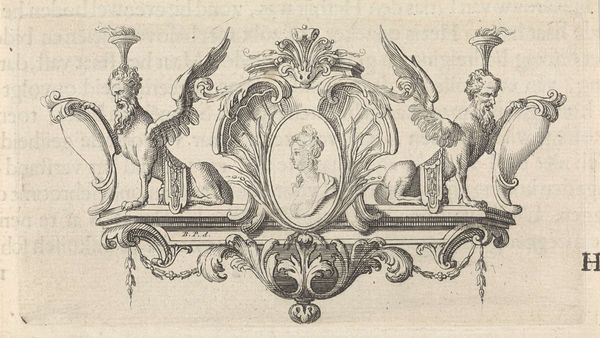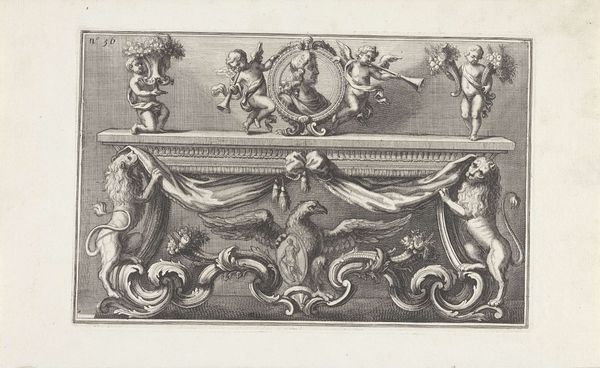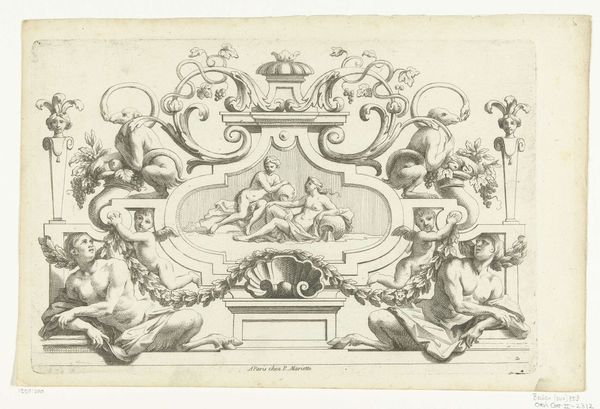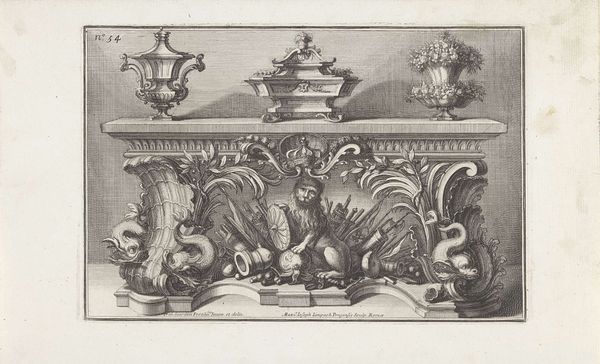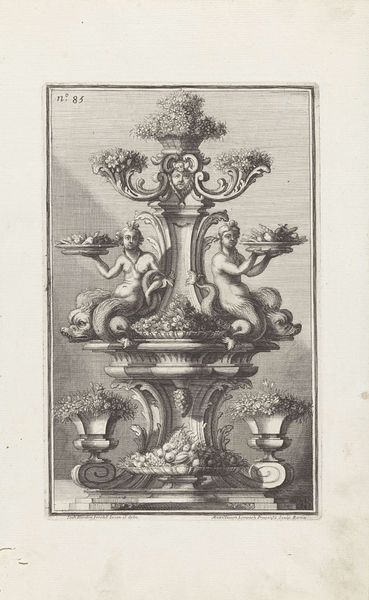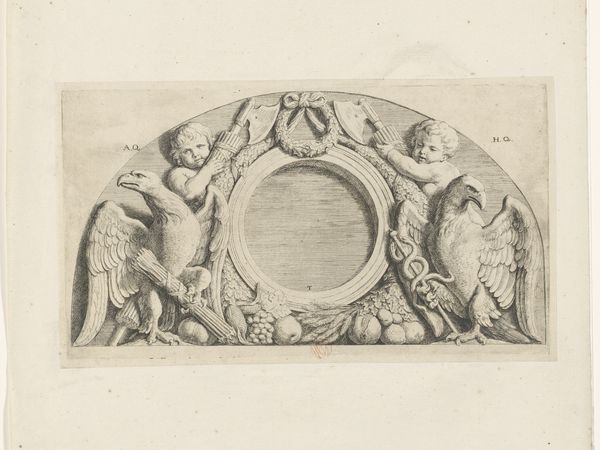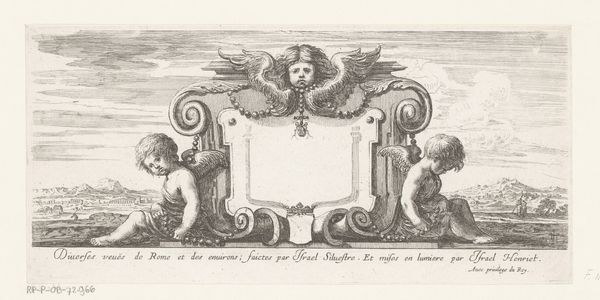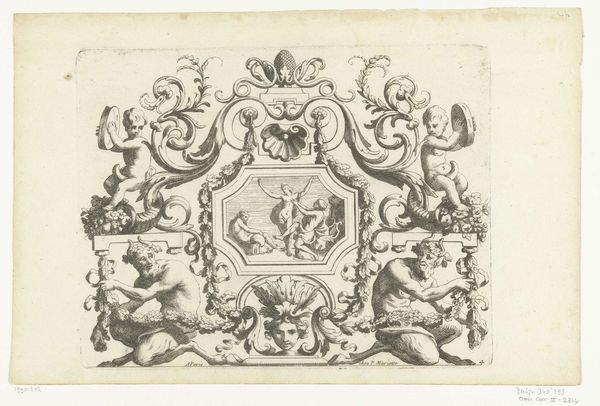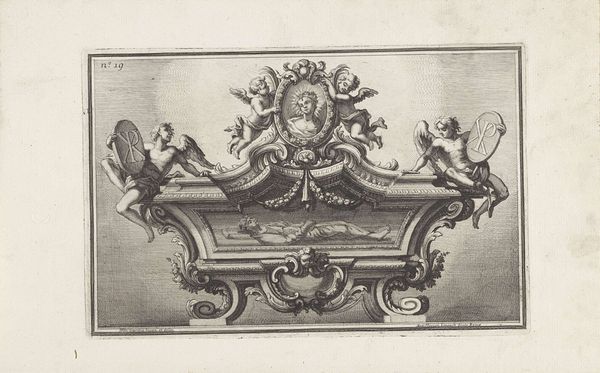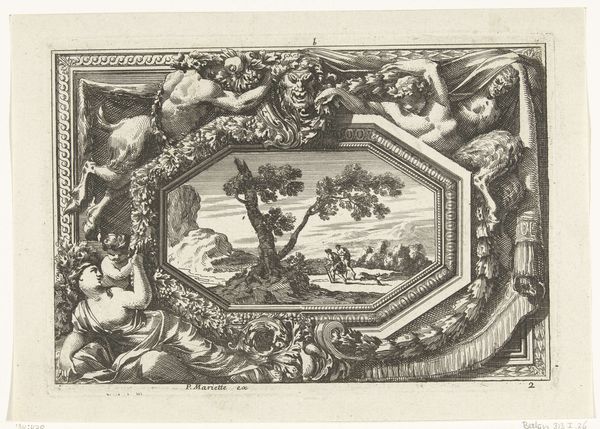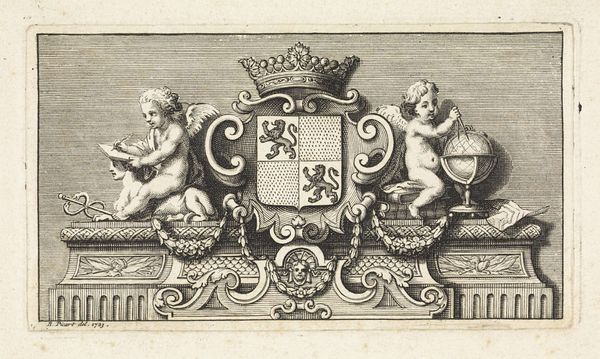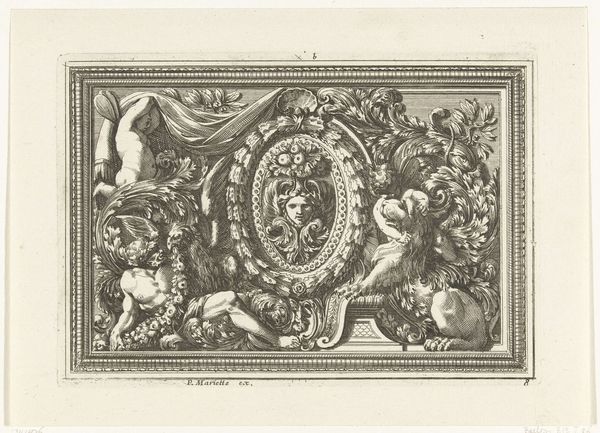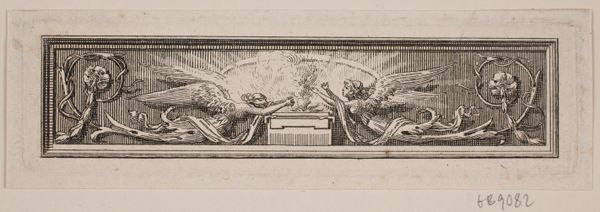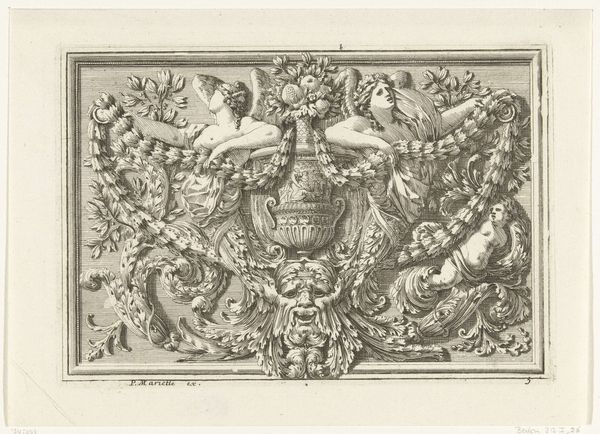
drawing, engraving
#
drawing
#
baroque
#
engraving
Dimensions: height 178 mm, width 280 mm
Copyright: Rijks Museum: Open Domain
Editor: This engraving from 1714, "Ornamentele tafel" by Maximilian Joseph Limpach, showcases a lavish baroque table design. It's brimming with ornamental details - musculature figures, lions, and a regal bird of prey. The detail is incredible! How might this design reflect the culture of the time? Curator: Well, what immediately strikes me is the very public and performative nature of power. This table design, far from being merely functional, is a declaration. It's almost as if it’s a stage for symbolic display, isn't it? Editor: It definitely has that sense of theater about it. Curator: Precisely! Consider the intended audience. It's likely not meant for private enjoyment, but to impress visitors and solidify the patron's position within a social hierarchy. How do you see the use of classical motifs and symbolism fitting into this power dynamic? Editor: I suppose it's all about legitimizing authority, tying their status into a grand, historical narrative. Like the figures holding up the table, acting as load-bearing support? Curator: Yes, it’s also important to consider where a piece like this would be displayed. Likely, it was used to suggest permanence in the face of fleeting trends. And what about the flowers on the table - they represent an engagement of beauty? How does the museum holding it contribute to the artwork's story now? Editor: Now that you mention it, its place in the museum sanctifies the piece as "art", ensuring its preservation and continued study, reinforcing its cultural and historical relevance to a wider public. Curator: Exactly. Thinking about how museums impact art is a great step to critical thinking about art. I didn't consider this angle myself!
Comments
No comments
Be the first to comment and join the conversation on the ultimate creative platform.
